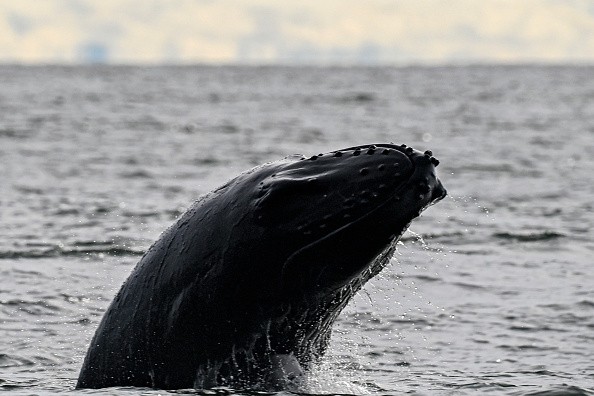A professor in the United Kingdom has retracted his outrageous assertion that Scotland's fabled Loch Ness monster is a "whale's penis."

"There are no whales in Loch Ness," said Michael Sweet, a molecular ecologist at the University of Derby, in response to his cryptozoological revelation.
An Infamous Hypothesis
The researcher initially proposed the contentious motion in an April 8 tweet that received over 100,000 likes.
The scientist wrote, "Back in the day, travelers/explorers would depict what they observed." "Many sea monster myths originate here, i.e., Tentacled and alien-like appendages protruding from the water, creating the impression that something dangerous lurked beneath....however, in many cases, it was only whale d - - ks."
Whales Penis?!
In the accompanying photographs, an iconic black-and-white Nessie shot is juxtaposed with a photo of a blue whale's penis protruding out of the sea. The images show how similar the Loch legend's head and neck were to a cetacean's appendage, which is the longest in the animal kingdom and may grow 10 feet long.
Blue whales like to breach penis-first, as Sweet explained in the following tweet. "Whales frequently mate in groups, so while one guy is occupied with the female, the other male simply pops his d - - k out of the water and swims around, waiting his turn," he pondered. "Isn't it true that everyone has to have a little fun?"
Going Viral

The whale story went viral on Twitter, prompting one commentator to ask, "Why were the whales flashing their d - - ks off to random people?"
" "Big d - - k energy so strong it generates monsters," wrote another.
A statistician and aquatic ecologist named Charles Paxton even claimed to have created the study article on which Sweet was based his Twitter outburst. According to the Edinburgh University Press, the story claimed that a feared sea serpent "first mentioned by the 'Apostle of Greenland' Hans Egede in 1741" was an "unfamiliar cetacean," according to the Edinburgh University Press.
The paper's abstract stated, "The species seen was likely to have been a humpback whale (Megaptera novaeangliae), a North Atlantic right whale (Eubalaena glacialis), or one of the last remaining Atlantic grey whales (Eschrichtius robustus), either without flukes or possibly a male in a state of arousal."
No Nessie
On the other hand, Paxton did not believe Nessie was a free spirit, tweeting: "We never stated (and I do not believe) that many sea serpent accounts arose from observations of whale penises." There are only one or two."
In a follow-up piece, he clarified that he never proposed whale phallus-flaunting as an explanation for freshwater monsters since whales seldom reach freshwater.
Sweet has subsequently refuted the raunchy hypothesis.
Sweet, who believes the Scottish monster is a hoax, stated, "I chose the image of Nessie purely as an example of what people used to describe sea monsters looking like." Given the lack of whales in Loch Ness, he said that Nessie "was a terrible option to utilize in this circumstance."
"Penises (from diverse species) were undoubtedly confused by fatigued and half-starved mariners throughout the world," the scientist maintained.
Trick
A British outdoorsman paddling around Loch Ness captured drone footage in September, which many online tinfoil-haters thought was the famous Nessie. Since then, the photographer has chalked it up to a "light/wave trick."
Related Article : 5 Most Important Fossil Discoveries in the World
For more prehistoric news, don't forget to follow Nature World News!
© 2026 NatureWorldNews.com All rights reserved. Do not reproduce without permission.





